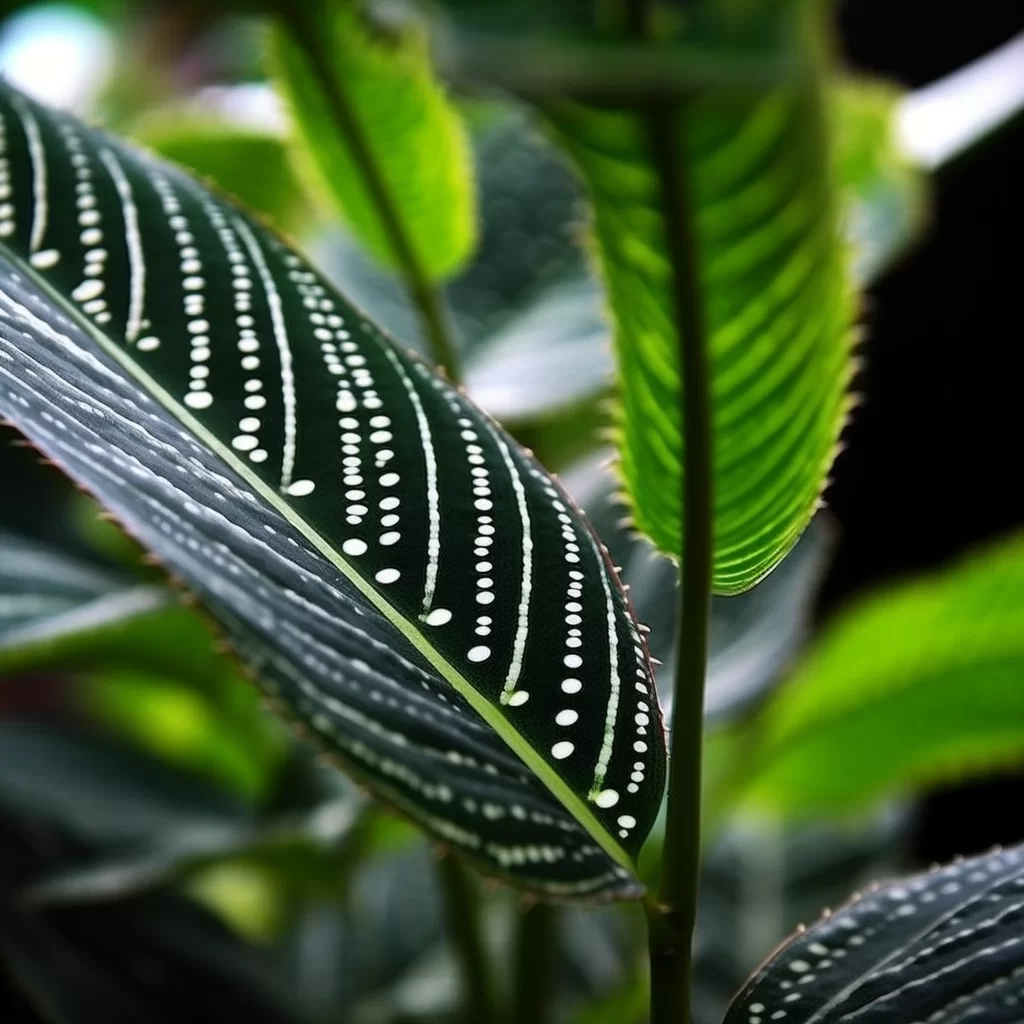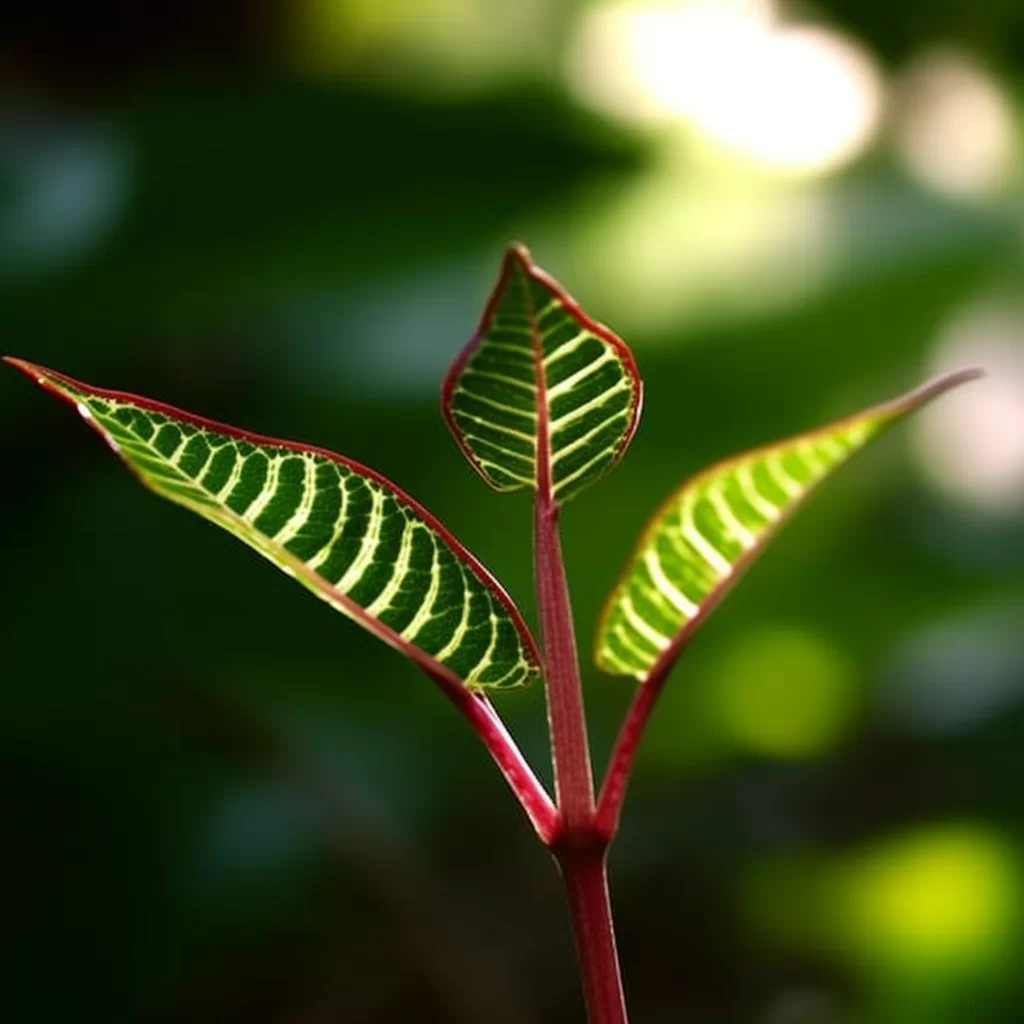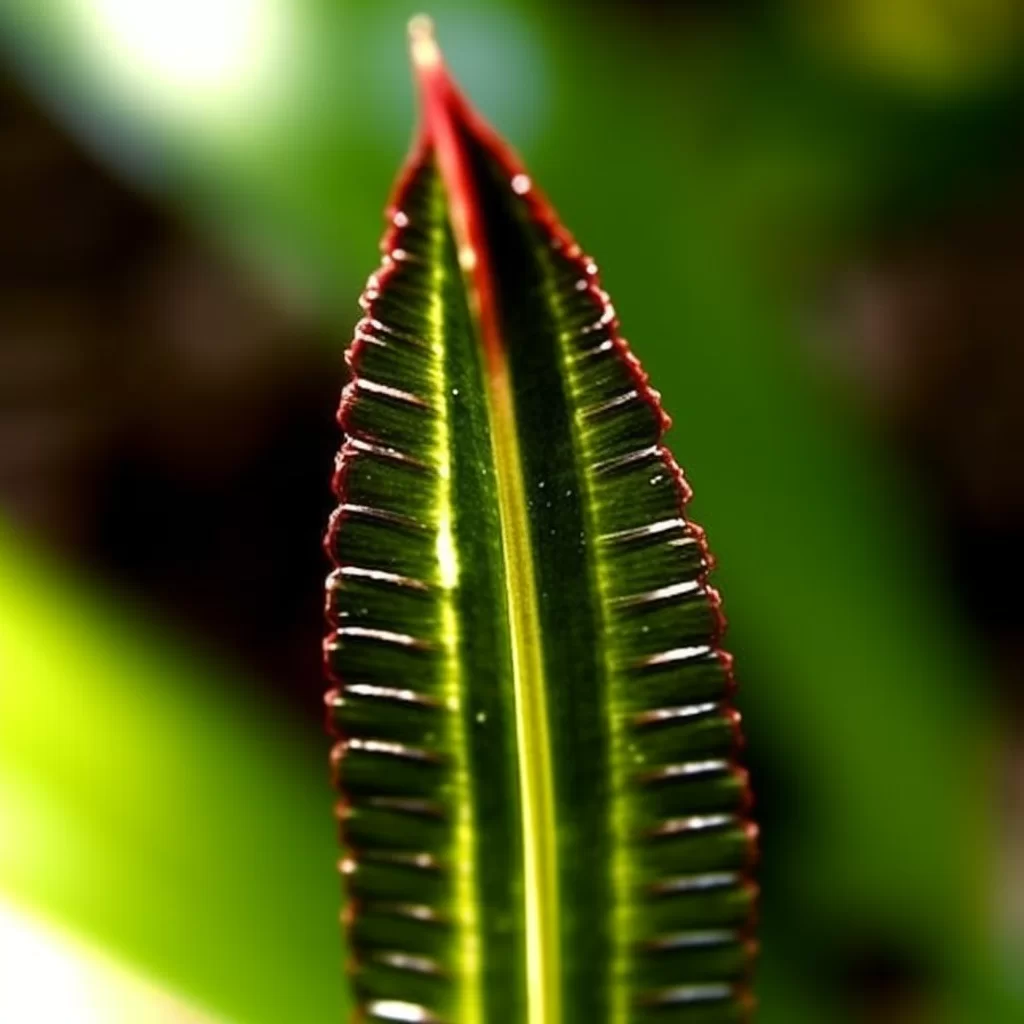Story of Day :
Contents
The Pinstripe Plant: A Complete Guide and Care Tips
Gardening is a wonderful hobby that involves nurturing and caring for plants.
It entails putting in hard work, patience, and love to ensure that your beloved plants grow strong and healthy.
An indoor plant that has caught the attention of many gardening enthusiasts is the pinstripe plant (Calathea ornata), which is loved for its striking appearance.
With dark green leaves accented by pink stripes, this unique plant adds a touch of elegance to any home garden.The pinstripe plant’s beauty can be attributed to its distinctive features such as glossy leaves with an attractive shape, striking patterns on their surface, and hues that resemble fresh paint.
It thrives well in shaded areas with moderate humidity levels making it a perfect addition to indoor spaces like living rooms or bedrooms.
Moreover, it requires minimal maintenance but abundant care such as watering regularly and ensuring the soil is moist but not soggy.
In conclusion, if you’re looking for an eye-catching houseplant that will add personality to your home garden effortlessly while requiring minimum effort from you – then get yourself a pinstripe plant!
Overview of the Pinstripe Plant
The pinstripe plant is a popular houseplant that hails from Brazil and belongs to the Marantaceae family.
With its striking dark-green leaves adorned with bright pink stripes, it stands out among other houseplants and can grow up to one meter tall.
While it prefers bright light, it can tolerate lower levels of light as well, making it an ideal addition to any home.
Its unique color combination has made it highly sought-after by plant enthusiasts all around the world who appreciate its rare beauty. In addition to being visually appealing, the pinstripe plant also has some interesting characteristics.
In addition to being visually appealing, the pinstripe plant also has some interesting characteristics.
It’s known for being highly responsive to changes in light and temperature conditions, which means that its leaves will move throughout the day as they adjust themselves for optimal photosynthesis.
This behavior has earned it another common name – “prayer plant.” Additionally, like other plants in the Marantaceae family, this species exhibits a phenomenon called nyctinasty – folding up its leaves at night as if saying goodnight before opening them up again in the morning when daylight returns.
All of these unique attributes make caring for a pinstripe plant an exciting experience for both novice and experienced indoor gardeners alike!
Care Tips for Your Pinstripe Plant
- Light: The pinstripe plant thrives in low-to-medium indirect light conditions without direct sunlight exposure because too much sun can cause its leaves to fade or turn yellow.
Place your plant next to east-facing windows where it can receive morning sun or in shaded areas where there’s sufficient ambient light.
- Watering: Calatheas prefer moist soil but not waterlogged conditions, so water them once a week when the top inch of soil dries out.
Use room temperature water or rainwater because tap water contains salts that may harm your Calathea over time.
Make sure you drain any excess water from the pot’s saucer after watering.
- Humidity: The pinstripe plant thrives in high humidity levels between 60-80%, so consider placing your Calathea near humidifiers or misting them daily with lukewarm distilled water during dry seasons.
- Temperature: The pinstripe plant prefers warm temperatures between 65-85°F (18-29°C) and dislikes cold drafts, so keep them away from air conditioning vents or windows during winter seasons.
- Fertilizer: Feed your Pinstripe plant once a month with half-strength liquid fertilizer or organic options like worm castings or compost tea to support healthy growth.
Avoid over-fertilizing because it can cause leaf burn or root damage.
- Potting soil: The pinstripe plant prefers well-draining, porous soil that retains moisture without getting waterlogged.
Use peat moss-based potting mix with added perlite and sand to improve drainage, and avoid heavy clay soils that may suffocate its roots.
Pest Management for Your Pinstripe Plant

The pinstripe plant, which is a popular indoor houseplant, can sometimes fall prey to pests such as spider mites, mealybugs, scale insects, and fungus gnats.
These pesky bugs can cause significant damage to the plant if not treated promptly.
Some signs that your pinstripe plant may be infested with pests include yellowing leaves, sticky residue on the underside of the leaves and webbing on the edges of its foliage.Fortunately, there are several ways to manage pest infestations in your pinstripe plants.
Firstly ensure that you are providing them with proper care such as watering them regularly and placing them in well-lit areas but not direct sunlight.
This will keep your plant healthy and less susceptible to attacks from these pests.
Secondly you could try using natural remedies such as spraying diluted neem oil or insecticidal soap onto its foliage or even introducing beneficial insects like ladybugs into your home garden area which help control pest populations by feeding on them thereby reducing their numbers over time.
By taking proactive measures towards keeping your pinstripe plants healthy you will be able to reduce any damage caused by pests significantly!
- Clean your Calathea’s leaves regularly using a soft damp cloth to remove dust and debris that may attract pests.
- Spray insecticidal soap or neem oil on affected areas as directed; this will help kill off any pesky critters without harming your plants.
- If you notice severe pest infestation despite taking these measures above call in a professional gardener to help eliminate the problem safely and effectively while minimizing harm caused by chemical products..
The closing moments of any experience are always worth reflecting upon, and this holds especially true for writing.
Whether it’s a school essay or a book, wrapping up the final paragraphs can be both satisfying and challenging.
The conclusion must leave a lasting impression on the reader while also tying up any loose ends in the story or argument.
This can be achieved by summarizing key points or themes, offering some final thoughts or reflections, or by providing a call to action that encourages readers to take action based on what they’ve just read. In addition to concluding the main idea of your writing piece effectively, it is important to create an emotional connection with your audience in those last words as well.
In addition to concluding the main idea of your writing piece effectively, it is important to create an emotional connection with your audience in those last words as well.
A great way to do so is through vivid language and imagery that will stick with them long after they’ve finished reading.
Another way is by encouraging readers to think more deeply about the topic at hand and how it relates back to their own lives or experiences.
By doing so, you’ll help ensure that your words have a lasting impact beyond just the page they’re printed on!
The pinstripe plant is a stunning addition to any indoor garden, with its vibrant green leaves and contrasting thin white stripes.
It not only adds color but also brings life to the atmosphere of any room it’s placed in.
To keep this beautiful houseplant healthy, you can follow some care tips that will help it thrive indoors.
With a little patience, love, and attention to detail, your Calathea will add beauty to your home for years.To ensure that the pinstripe plant remains healthy and thrives in your indoor garden, avoid placing it in direct sunlight or drafts.
Instead, find a spot where it can receive indirect sunlight and maintain consistent temperatures between 65-75°F (18-24°C).
This tropical plant requires regular watering but cannot tolerate standing water around its roots; hence you must allow the soil to dry partially before watering again.
Additionally, misting the leaves every few days helps maintain proper humidity levels for optimal growth.
By taking these simple measures and showing this houseplant some love regularly will ensure that you enjoy its beauty for years on end!